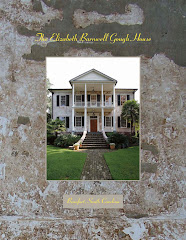
With the arrival of the fleet and the fall of Fort Walker and Fort Beauregard, the whites of Beaufort fled, leaving behind an enslaved population of 8,000 in town and on the neighboring Sea Islands.
Giving vent to years of silenced resentment and the joy of perceived sudden freedom, the black population responded with rampant looting and widespread destruction. Order was soon restored under Union occupation, however, over a year would pass before the government would recognize the former slaves as free with the Emancipation Proclamation of January 1, 1863.
Until then, the former slaves were considered contraband of war. Known simply as contraband, they had a limbo status of neither slave nor free, a status that reflected Northern political considerations. Politically, the war was proceeding poorly for the North. A threatened Washington was dependent on the continued neutrality of the border states – a neutrality that would have been jeopardized with emancipation.
The prolonged contraband status also reflected an underlying racial prejudice, as evidenced in the satirical drawings that ran in Harper’s Weekly immediately after the fall of Forts Walker and Beauregard (shown at left). Such drawings both revealed and fed the racial prejudice of the era.
Racial attitudes of the time led many whites to believe the former slaves incapable of functioning as free individuals and any thought of a future society where white and black lived together as equals was inconceivable.
As the North pondered possible ‘solutions’ such as the repatriation of blacks to Africa or the creation of colonies in Haiti, the former slaves remained contraband.
Please note that the material in this blog is copyrighted. It is not to be reproduced without my specific written permission.
.jpg)
